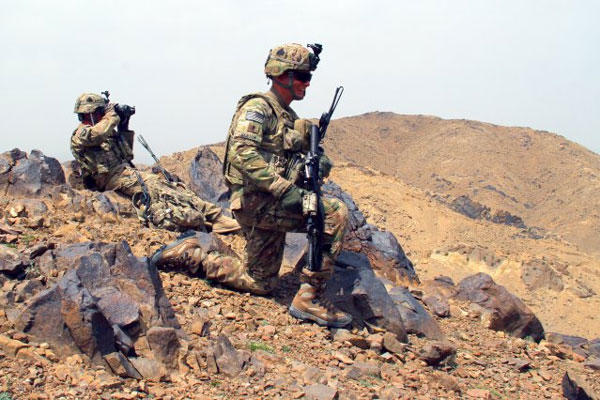FORT BENNING, Ga. -- The U.S. Army is currently developing four new combat vehicles, but maneuver officials here maintain that infantry brigades of 2020 may still traverse the battlefield on foot.
Officials at the Army's Maneuver Center of Excellence here outlined how tomorrow's infantry brigade combat teams will likely change during the 2013 Maneuver Warfighter Conference.
In addition to adding a third maneuver battalion, each IBCT will have an additional engineer company, a third cavalry troop and a new artillery battery of six M777 155mm howitzers.
But one weakness of the IBCT formation that infantry officials here continue to wrestle with is the speed small units move round the battlefield.
"The best way I can describe this is our mobility dilemma -- we know that our lighter forces are strategically very mobile, but once they are on the ground they move … at best three miles an hour," Brig. Gen. David Haight, chief of infantry at Benning, told Military.com on Sept. 11.
By contrast, the Army's heavier, armor brigade combat teams are slower to deploy, but once on the ground they move 40 to 60 miles per hour, he said.
One of the Army's top priorities is developing the new Ground Combat Vehicle to replace the outdated Bradley Fighting Vehicle. Close behind in importance is the Joint Light Tactical Vehicle that will replace the Humvee fleet.
The Army also wants to replace the Vietnam-era M113 armored personnel carrier with the Armored Multipurpose Vehicle, but infantry officials are not sure what it will look like or how it will be used.
"Does the Bradley get modified and become the AMPV? Does the Bradley move to support the new GCV just as the M113 supported the Bradley fleet?" Haight said. "That's still pre-decisional. We are still trying to work out the pros and cons, because these decisions aren't millions. These decisions are millions with a B, that's billions of dollars."
Then there is the Light Reconnaissance Vehicle that could outfit cavalry squadrons for their mounted and dismounted scout missions.
The Army has also expressed interest in developing light tank concept to provide mobile protected fire power for forced entry operations such as airborne assaults.
It's uncertain whether any or all of these programs will be delayed as the massive defense spending cuts of sequestration stretch in to 2014.
Maj. Gen. H.R. McMaster, commanding general of U.S. Army Maneuver Center of Excellence, said he is confident the Pentagon will eventually find the money to keep IBCTs relevant on the 2020 battlefield.
"This is something we are up against a lot of times when we are talking about capabilities and how we improve the combat effectiveness of our maneuver force; there is the perception that there is no money -- of course there is money and the key is how do we prioritize our efforts and what can we do make sure we can continue to modernize the force across all of our formations so they can achieve overmatch," he said. "There are things we can do right now. We can accelerate AMPV right now … this idea that there is no money and that we shouldn't be thinking of how we can make the Army better is something we just have to reject."































